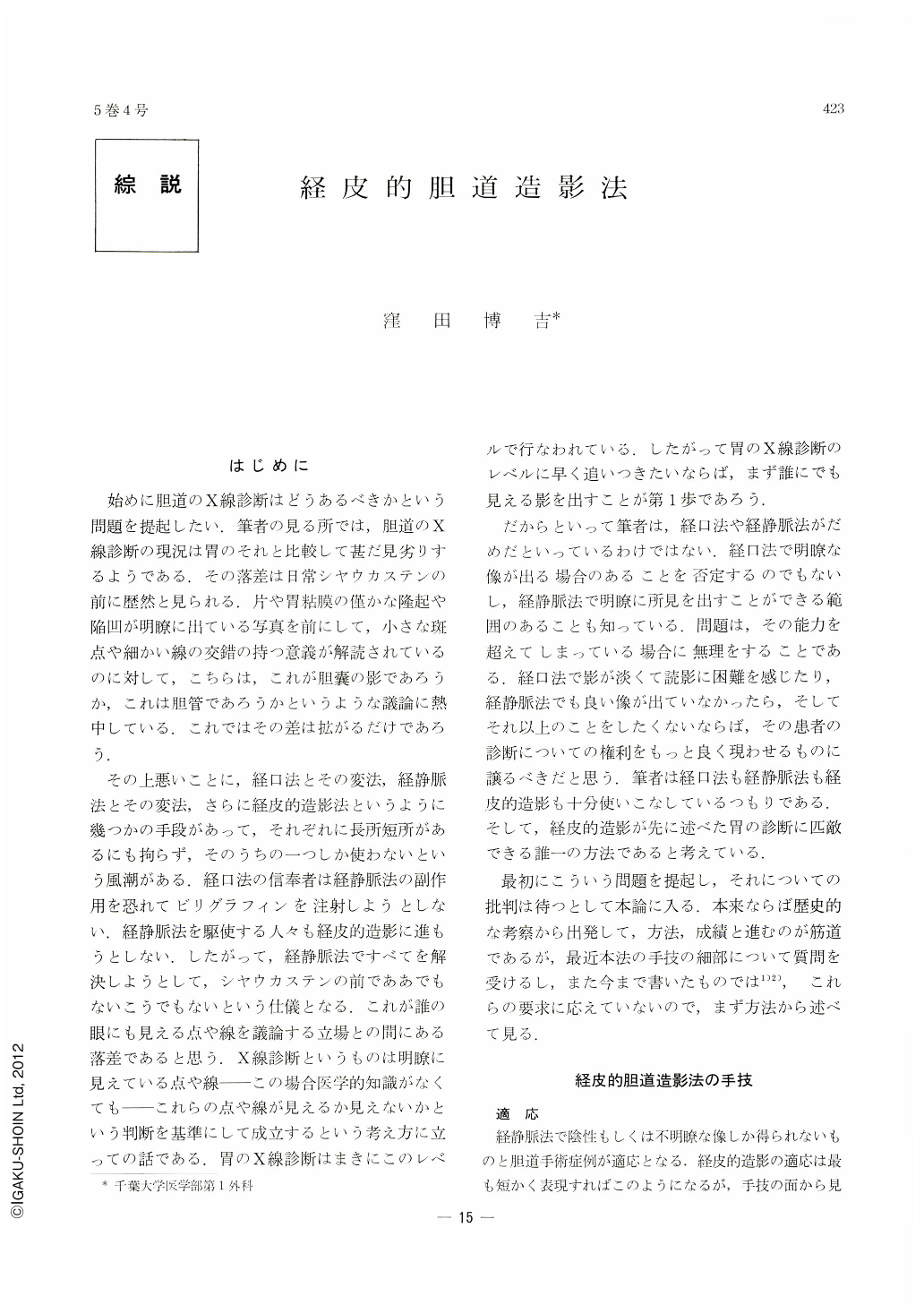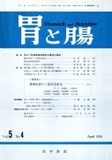Japanese
English
- 有料閲覧
- Abstract 文献概要
- 1ページ目 Look Inside
はじめに
始めに胆道のX線診断はどうあるべきかという問題を提起したい.筆者の見る所では,胆道のX線診断の現況は胃のそれと比較して甚だ見劣りするようである.その落差は日常シヤウカステンの前に歴然と見られる.片や胃粘膜の僅かな隆起や陥凹が明瞭に出ている写真を前にして,小さな斑点や細かい線の交錯の持つ意義が解読されているのに対して,こちらは,これが胆囊の影であろうか,これは胆管であろうかというような議論に熱中している.これではその差は拡がるだけであろう.
その上悪いことに,経口法とその変法,経静脈法とその変法,さらに経皮的造影法というように幾つかの手段があって,それぞれに長所短所があるにも拘らず,そのうちの一つしか使わないという風潮がある,経口法の信奉者は経静脈法の副作用を恐れてビリグラフィンを注射しようとしない.経静脈法を駆使する人々も経皮的造影に進もうとしない.したがって,経静脈法ですべてを解決しようとして,シヤウカステンの前でああでもないこうでもないという仕儀となる.これが誰の眼にも見える点や線を議論する立場との問にある落差であると思う.X線診断というものは明瞭に見えている点や線―この場合医学的知識がなくても―これらの点や線が見えるか見えないかという判断を基準にして成立するという考え方に立っての話である.胃のX線診断はまきにこのレベルで行なわれている.したがって胃のX線診断のレベルに早く追いつきたいならば,まず誰にでも見える影を出すことが第1歩であろう.
だからといって筆者は,経口法や経静脈法がだめだといっているわけではない.経口法で明瞭な像が出る場合のあることを否定するのでもないし,経静脈法で明瞭に所見を出すことができる範囲のあることも知っている.問題は,その能力を超えてしま一,ている場合に無理をすることである.経口法で影が淡くて読影に困難を感じたり,経静脈法でも良い像が出ていなかったら,そしてそれ以上のことをしたくないならば,その患者の診断についての権利をもっと良く現わせるものに譲るべきだと思う.筆者は経口法も経静脈法も経皮的造影も十分使いこなしているつもりである.そして,経皮的造影が先に述べた胃の診断に匹敵できる誰一の方法であると考えている.
最初にこういう問題を提起し,それについての批判は待つとして本論に入る.本来ならば歴史的な考察から出発して,方法,成績と進むのが筋道であるが,最近本法の手技の細部について質問を受けるし,また今まで書いたものでは1),これらの要求に応えていないので,まず方法から述べて見る.
Percutaneous cholangiography, a most decisive diagnostic method in the diseases of the bile duct, has not been universally employed because it is usually associated with leakage of the bile. In the meantime it has come to be known this method can be employed with safety depending on indication. Its necessity has been duly recognized as well because peroral or intravenous cho1angiography is often insuflicient.
The authors have devised a method of accurately puncturing an intrahepatic bile duct by exact measurement. An intrahepatic bile duct, when it is dilated more than 5mm in diameter, is now tapped in a high percentage by aiming at a point directly proximal to the junction of the intrahepatic bile ducts. By placing a patient in a supine position, the height from the back up to the processus xiphoicleus is measured space. When it is more than 20 cm, the needle is introduced horizontally at the height of 13 cm between 7 or 8 intercostal space when it is less than 20 cm, the needle is inserted at 12cm high. Because the intrahepatic. ducts are winding are bifurcated posteriorly and anteriorly, the needle in a high percentage taps either of these bile ducts.
This method is not only useful for the diagnosis of gallstone, but in the differential diagnosis of cancer as well. It should be positively employed when cancer of the liver or bile duct is suspected.

Copyright © 1970, Igaku-Shoin Ltd. All rights reserved.


